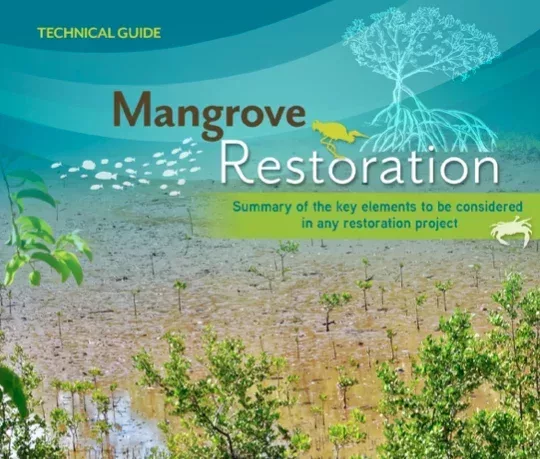The French Tropical Wetlands Network has produced a technical guide on mangrove restoration. The report provides a summary of key elements that should be considered in any mangrove restoration project, based on a review of available literature and practices around the world.
“Mangroves are currently threatened by a host of anthropogenic pressures, including pollution, land take, infilling, aquaculture and urbanisation. A significant proportion of the world’s mangroves have already been lost, including within the French Overseas Territories in the Caribbean, Indian Ocean and Pacific regions.” said Gaelle Vandersarren, who coordinates the network from Guadeloupe.
The two different fundamental approaches to ecological restoration are: natural colonisation and mangrove planting. These two approaches are described and explored in depth in the report. Due to the threats facing mangrove systems, their restoration is being increasingly undertaken, often in the form of replanting mangrove stands with seedlings. In spite of the efforts involved in these initiatives, the results are often disappointing due to a lack of forward planning. Problems include poor choice of location area, mono-specific coverage or lack of consultation with local stakeholders, all of which can limit the medium- or long-term success of these actions, and thus fail to restore a functional mangrove forest. A successful restoration action must result in the establishment of a relatively large, diverse, functional, and self-sustaining mangrove forest that can provide environmental and human benefits. The guide therefore recommends a natural colonisation approach whenever feasible, based on recommendations from organisations such as Mangrove Action Project (MAP) or Wetlands International.
The translation of the report was funded by ICRI.
